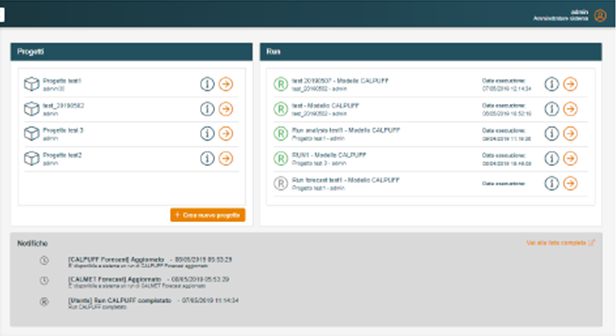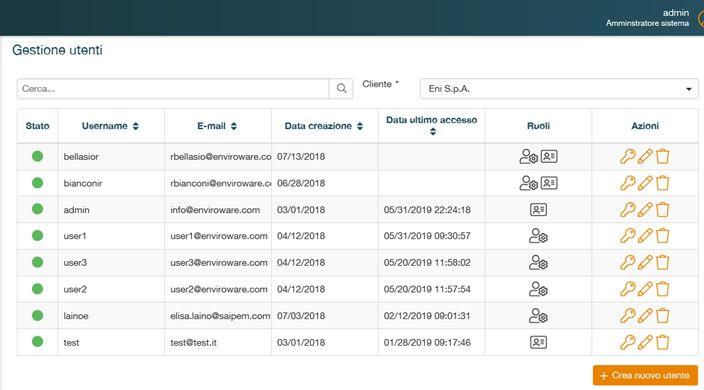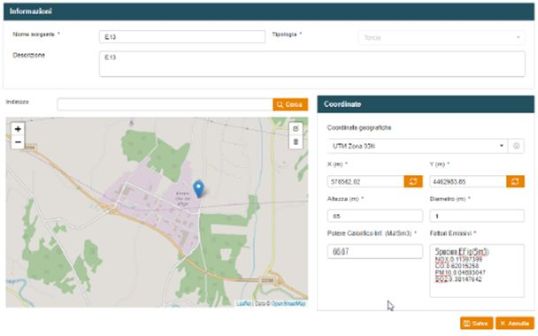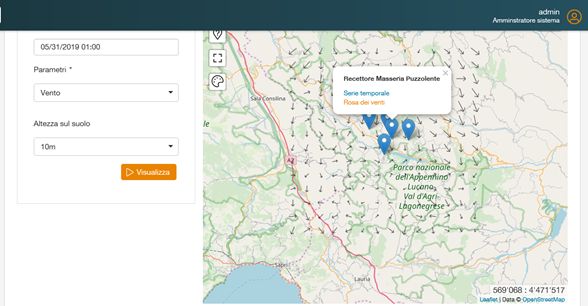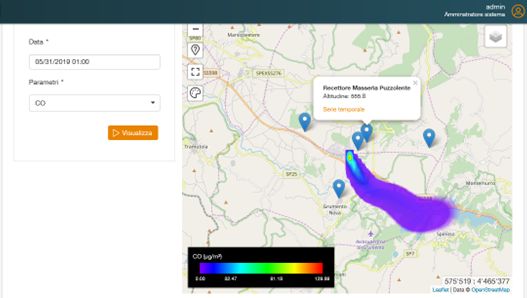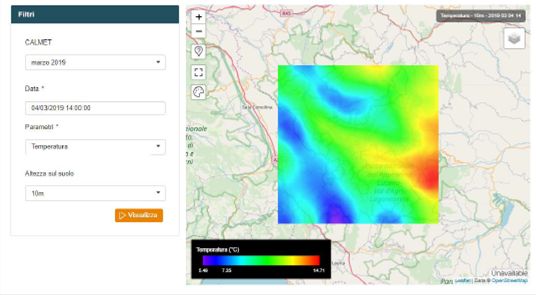AMS
AMS (Atmospheric Modeling System) is a web-based air quality modeling system based on WRF, CALMET, CALPUFF and LAPMOD models. The system can be used in "Analisys mode" to simulate atmospheric releases in the past, as well in "Forecast mode" to simulate releases in the future.
AMS can be setup for any location worldwide. WRF runs every six hours with initial and boundary conditions from the GFS global forecast model by NOAA. When the WRF simulation (typically up to 72 hours ahead) is completed, the CALMET model is run by AMS in cascade, using the output of WRF, preliminarily processed by the CALWRF meteorological processor of CALMET. In parallel, AMS runs WRF daily to create an in cremental archive of analysis runs for the past.
AMS users can set up automated forecast simulations of air dispersion that run one or more times a day. This is useful for example in an industrial plant to evaluate potential consequences of emissions from existing and known sources. Via the web interface, users can also set up a run in the past, for example to assess the compliance of an industrial plant with regulations.
The web interface allows to fully manage the simuations' input (interactive location of sources on map or input from forms, definition of source parameters, definition of domain and discrete receptors), run (model selection and execution) and output (postprocessing for statistics of interest, georeferenced maps of results). Maps can be queried by clicking to obtain a time series of variables in the selected point.
AMS can also be connected to a monitoring system for air quality and for source parameters. These data can thus be archived in the database of the system and used for comparison with model results or for using measured emission parameters for monitored sources.
